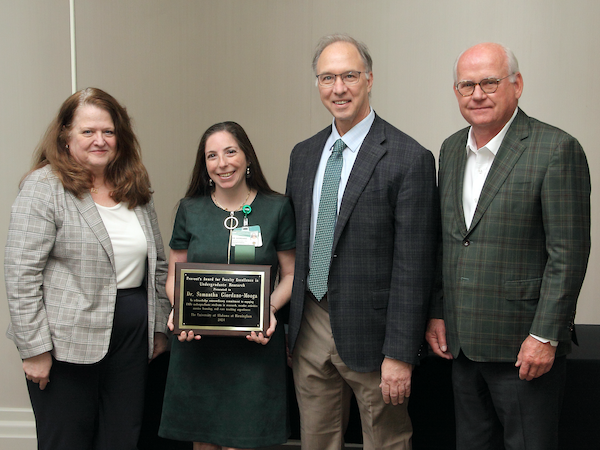 Dr. Jia Li Postdoctoral fellow in the Heersink School of Medicine’s department of physical medicine and rehabilitation Dr. Jia Li is channeling the CEDHARS spirit by extrapolating her prior research to include people with disabilities.
Dr. Jia Li Postdoctoral fellow in the Heersink School of Medicine’s department of physical medicine and rehabilitation Dr. Jia Li is channeling the CEDHARS spirit by extrapolating her prior research to include people with disabilities.
While earning her doctorate in nutrition science, Li’s research looked at metabolic health in the general population. But now, through one of the 2022 CEDHARS pilot grants, Li will apply her research base to investigate cost-effective approaches to prevention of cardiovascular disease for people with mobility limitation due to spinal cord injury.
“It’s interesting how your research ideas can kind of circle back,” Li said with a laugh.
Li said roughly one in two individuals with a spinal cord injury experience postprandial hypertension. PPH is defined as a fall of more than 20 mmHg in systolic blood pressure within two hours of a meal. Although largely asymptomatic, PPH is associated stroke, coronary disease, and death. Research shows it’s associated with 1.79 times the risk of all-cause mortality.
There are a number of factors that put people with spinal cord injury at a higher risk for PPH. This is compounded by individuals with spinal cord injury being at a higher risk of insulin and glycemic responses due to autonomic disfunction.
The aim of the grant is to measure the impact of a low-glycemic index diet on PPH and postprandial glycemia on people with spinal cord injury.
“The study is significant and innovative as it addresses two understudied, yet highly prevalent conditions in individuals with chronic SCI using one simple cost-effective dietary intervention,” Li said.
The study will recruit 12 participants with chronic spinal cord injury and PPH to randomize a control group and low GI diet, separated by at least a one-week wash out period. Blood pressure and glucose responses will be measured in a two-hour, in-lab meal test, as well as a two-and-a-half day free-living environment in which participants measures are taken via a monitor remotely.
Li said different levels of spinal cord injury, such as paraplegia and tetraplegia, can have different PPH levels. Li believes the preliminary data that comes from the pilot study could potentially lead to R01 equivalent grants that look at the long-term impact and efficacy of the low GI diet.

